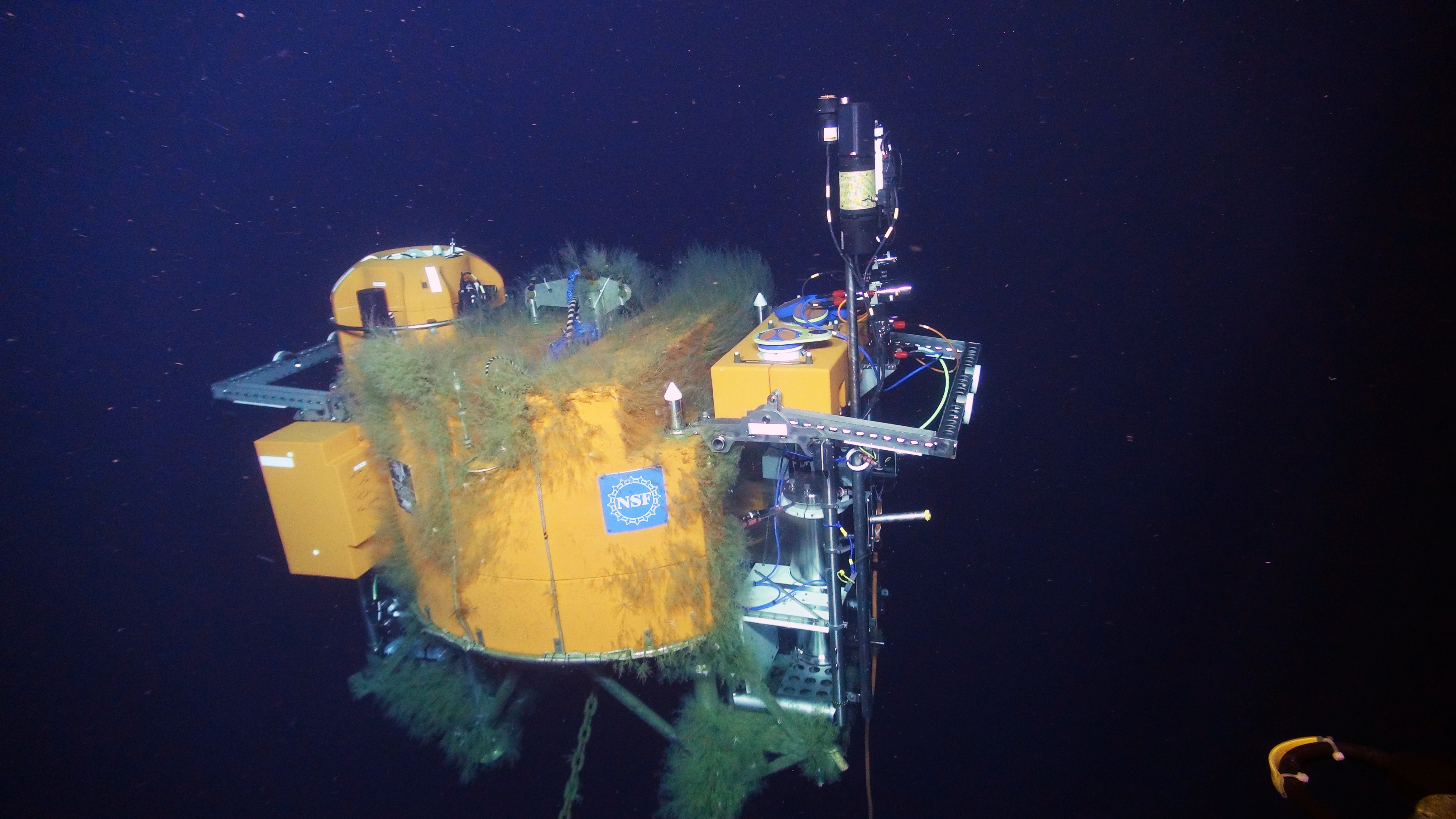The ocean waters off the Oregon and Washington coasts are some of the most biologically productive in the world. Within these waters, very small single-celled plant-like organisms and algae, called phytoplankton, use a pigment called chlorophyll-a to produce food. These microscopic marine organisms also form the foundation of the ocean food web. Approximately 3-9% of the light energy absorbed by chlorophyll pigments is re-emitted from the first excited state as fluorescence (emitted at 683 nm), and this emitted light is measured by the fluorescence sensor. Hence, measurement of chlorophyll concentration via the intensity of the fluorescence can be used as a proxy for phytoplankton population.
NASA and other organizations use sensors on satellites to broadly measure chlorophyll across large areas, but these sensors can only measure values very near the ocean surface. In contrast, fluorometer instruments on the Cabled Array Shallow Profiler Mooring platforms and on the profiling Science pods at Slope Base, the Oregon Offshore Site, and Axial Base provide continuous real-time year-round measurements to 200 m beneath the oceans surface. Fluorometers are also included on the Deep Profiler Mooring vehicles. These data provide measurements of thin, ephemeral, biologically-rich layers that cannot be made using satellites, yet are highly complementary to them.
On the Cabled Array there are three different devices to measure different optical properties of seawater. A 2-wavelength fluorometer, provided by WET Labs (ECO Triplet-w), specifically examines chlorophyll-a fluorescence and optical backscatter (red wavelengths). The 3-wavelength fluorometer, also provided by WET Labs (ECO Triplet-w), measures chlorophyll-a fluorescence, optical backscatter (red wavelengths), and colored dissolved organic matter (CDOM) in the seawater. CDOM (aka chromophoric dissolved organic matter, yellow substance, and gelbstoff) occurs naturally in aquatic environments primarily as a result of tannins released from decaying detritus. Thus, CDOM concentrations are highest near shore, especially near river mouths and estuaries. CDOM concentrations impact inherent optical properties of seawater, light availability for phytoplankton photosynthesis, and remote sensing of chlorophyll. Phytoplankton and zooplankton are also sources of CDOM. In addition, CDOM concentrations may be used to indicate the dispersion, transport and mixing of a water mass.

